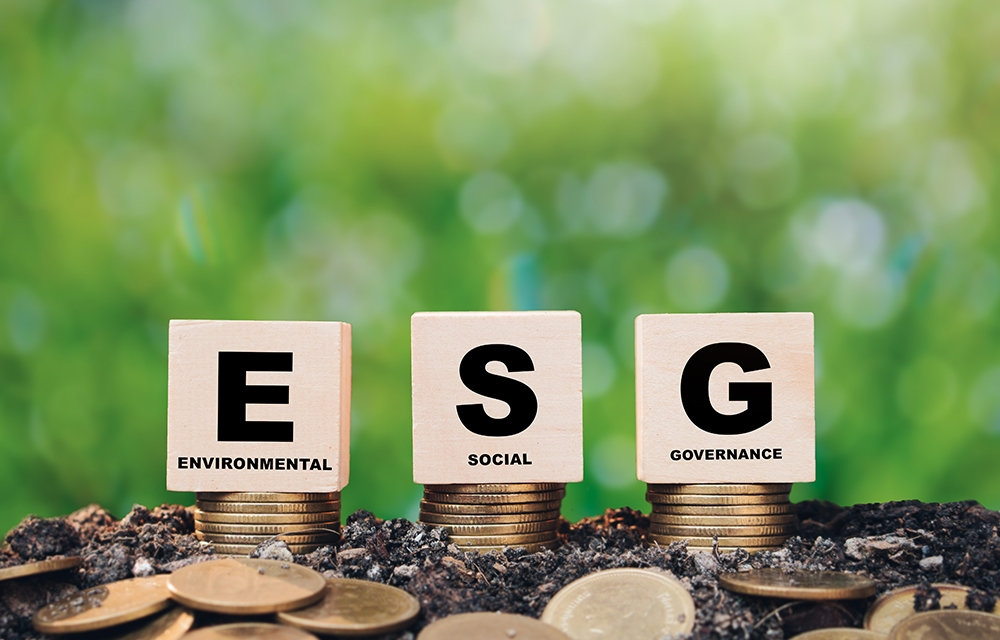
The banking industry in the United States is facing increasing pressure to consider its environmental and social impact. As concerns about climate change and social inequality continue to grow, consumers and regulators demand that financial institutions take a more active role in addressing these issues.
One of the major ways that environmental and social issues impact banks is through the increasing scrutiny of their lending and investment practices. For example, banks are being urged to increase lending to low-income communities, which the financial sector has traditionally underserved. Many banks are also being pressured into divesting from fossil fuel companies and investing in renewable energy and sustainable infrastructure.
In response to these pressures, a growing number of banks in the United States are beginning to implement environmental, social, and governance (ESG) criteria into their lending and investment decisions. This means that they are considering factors such as a company's carbon footprint and labor practices before providing funding. Think of it as the banking industry's version of "consumer reports" but for the planet and society.
One notable example of a bank incorporating ESG criteria is JPMorgan Chase, which announced in 2019 plans to provide $200 billion in loans and investments for clean energy and sustainable infrastructure by 2025. In addition, the bank aims to provide $75 billion in lending, investing, and financing for women and minority-owned businesses by 2025.
Another example is Wells Fargo, which has committed to providing $185 billion in lending, investing, and services for low-income and minority communities by 2027. The bank has also pledged to increase its investments in renewable energy and sustainable infrastructure and to reduce its greenhouse gas emissions.
In addition to large banks, smaller financial institutions like community banks and credit unions are also beginning to take steps to embed sustainability and ESG into their business models. According to the National Community Reinvestment Coalition (NCRC), community banks and credit unions have been particularly active in serving low-income communities, which have often been neglected by larger banks. This makes them well-positioned to lead the charge in incorporating ESG into their lending and investment practices.
While these initiatives are certainly a step in the right direction, there is still much work to be done. Banks are still facing criticism for failing to do enough to address environmental and social issues, and there is still a substantial gap between the commitments that banks have made and the actions that they are taking. But let's remember progress is progress, and every little bit counts.
One of the biggest challenges facing banks as they try to incorporate ESG criteria into their lending and investment decisions is the need for consistent and reliable data on environmental and social impact. Unfortunately, many companies do not disclose this information, and there is no widely accepted method of measuring and reporting on sustainability and social impact performance. But it's a work in progress, and we'll get there eventually.

Win-win situation
According to the 2021 "The State of Sustainable Finance Report" by the Global Sustainable Finance Initiative, the integration of ESG into banking practices is beneficial not only for the environment and society but also for the bottom line. Banks prioritizing ESG integration tend to outperform their peers regarding financial performance, with higher profitability and lower risk.
In fact, banks that scored high on ESG performance had a return on equity that was higher on average. The study also showed that banks prioritizing sustainability and ESG integration are better positioned to manage risks, generate higher profits, and contribute to a more sustainable and resilient global economy.
These findings provide compelling evidence that embedding sustainability and social impact into banking practices is not only an ethical choice but also a great business decision. This is a win-win situation where everyone benefits, and the banking industry can lead the way in forming a more sustainable and equitable future for all.
The potential is huge
Here are some interesting facts:
- The sustainable finance market is projected to reach $30 trillion by 2030
- 60% of financial institutions have increased their engagement with clients on ESG issues
- 92% of asset owners believe that ESG is a mainstream investment theme
- 50% of financial institutions are actively investing in sustainable infrastructure
- 63% of financial institutions have set specific ESG-related targets
What's next?
In order to truly make a difference in sustainability and social impact, banks must go beyond just lip service. One way to achieve this is through green bonds. Green bonds are debt securities that are used to finance environmentally friendly projects, such as renewable energy or sustainable infrastructure. According to a recent report, the green bond market has grown rapidly in recent years, reaching a size of $250 billion in 2019. By investing in green bonds, banks can demonstrate their commitment to sustainability and social impact while also supporting the development of more environmentally friendly projects.
Another way to increase sustainability and social impact is through community development financial institutions (CDFIs). CDFIs are specialized financial institutions that provide loans and other financial services to underserved communities. By working with CDFIs, banks can provide financing for important community projects and initiatives that might not otherwise receive funding. For example, in 2019, Bank of America pledged $1 billion in financing for CDFIs, which will be used to support affordable housing and small businesses in underserved communities.
In addition, banks can also partner with fintech companies to help drive sustainability and social impact. Fintech companies can provide innovative solutions for measuring and reporting on sustainability and social impact performance, which can be used to help banks make better lending and investment decisions. For instance, Spiral is a fintech company that helps banks and credit unions easily embed sustainability and social impact into their products to support their served communities while increasing engagement and revenue. Banks can tap into cutting-edge technology and expertise by partnering with companies like Spiral to help them grow their business, increase engagement, and improve their sustainability and social impact performance.
Banks must also consider the social and environmental impact of their own operations and supply chains. This includes reducing their own carbon footprint, improving their waste management practices, and ensuring that their suppliers are also taking steps to be more sustainable and socially responsible. For instance, Citi announced in 2020 its new five-year 2025 Sustainable Progress Strategy to help accelerate the transition to a low-carbon economy. This new strategy includes a $250 Billion Environmental Finance Goal to finance and facilitate climate solutions globally. This builds on Citi's previous $100 billion goal announced in 2015. Their goal is to become carbon neutral and to reduce its greenhouse gas emissions by 70% by 2030. The bank has also committed to using 100% renewable energy and purchasing green power through a renewable energy certificate program.

A brighter future ahead
The banking industry in the United States is facing increasing pressure to consider the environmental and social impact of their operations and investments, and many banks are beginning to take steps to address these issues. However, there is still much more that needs to be done, including the need for more consistent and reliable data on environmental and social impact and a closer examination of the gap between banks' commitments and their actions. Therefore, the banking industry must strive to be more responsible and sustainable to ensure a better future for all.


